Table of contents
The yam bean, tube bean or benkuang ( Pachyrhizus erosus) occurs naturally from Mexico to South America and now also in Asia and Africa. In Mexico it is called jícama. Only the root tuber of the plant, which is low in protein and fat, is edible (also raw).
Use in the kitchen
The root of the yam bean has a similar consistency to radish - from woody to juicy. The taste of the root flesh is earthy and sweet and reminiscent of apples.
Only the peeled root can be eaten raw. The other parts of the plant (except the flower) contain rotenone, which is more or less poisonous. Before using, please clean the root, brush it and peel it thoroughly. The peel is inedible and causes stomach pain.
Yam bean flour can be used for cakes and desserts.
The root meat, especially of young, fresh yam beans, is usually eaten raw as a salad or as a side dish. Yam beans that have been stored for a longer period of time are prepared like potatoes or sweet potatoes. They taste good boiled or in stews, vegetable stir-fries or as a puree. In Mexico, street vendors offer the jicama cut into strips with lime juice, salt and chili sauce as a snack.
In some countries, dried yam beans are ground to produce starchy flour, which is used to make cakes and desserts. 17
Vegan recipe for avocado, yam and orange salad
Ingredients (for approx. 6 servings): 3 tbsp cold-pressed rapeseed oil, 1 tsp lime juice, 1 chopped garlic clove, 1 tbsp white wine vinegar , 1 tsp ground cumin, 1 tsp sea salt, 1 pinch of chili powder, 230 g yam beans (Bengkoang), 2 oranges, 1 avocado, 1 red onion, 6 pieces of romaine lettuce (Romana lettuce).
Preparation: Peel the yam and cut into strips of about 0.5 x 3 cm, fillet the oranges, cut the avocado into pieces and the peeled onion into thin rings. For the vinaigrette, whisk all the liquid ingredients and the spices together and leave to cool briefly. In the meantime, wash the lettuce, tear it into small pieces and dry it a little with a salad spinner. If you don't have romaine lettuce to hand, you can use any other leaf lettuce. Then arrange the green lettuce leaves on plates, spread the fruit and vegetable mixture on top and pour the vinaigrette over it. Grind some fresh pepper over it if necessary.
Vegan recipes with yams can be found under the note: " Recipes that have the most of this ingredient ".
| Not only vegans or vegetarians should read this: Vegans often eat unhealthily. Avoidable nutritional errors. |
Purchasing - Storage
In supermarket chains such as Coop, Migros, Denner, Volg, Spar, Aldi, Lidl, Rewe, Edeka, Billa and Hofer, runner beans are not part of the standard range. In Europe, yam beans can be found in some health food stores, in South American grocery stores or in very large and well-stocked supermarkets. They are rarely found in organic quality, and even organic supermarkets ( Alnatura, Denn's Biomarkt) only stock them in exceptional cases, if at all.
When buying, you should make sure that the brownish skin of the runner bean is shiny rather than matte. Larger tubers are often a bit woody. The weight of the Benkuang should correspond to its size. If large tubers are rather light, they have been lying around for a while and have lost moisture.
In the DA-CH countries, yam beans (jicama) are available all year round thanks to long-distance imports. The local season varies depending on the country where it is grown.
The availability of yam beans varies depending on the size of the store, catchment area, etc. You can find our recorded food prices for the DA-CH countries above under the ingredient image - and by clicking you can see their development at various suppliers.
Storage tips
Yam beans are best stored in a dry place at room temperature (between 12 and 15 °C). Lower temperatures can damage the roots. Therefore, they should not be frozen. Stored at appropriate temperatures, yam bean roots will last up to four months. 1
Cut jiama, covered with plastic wrap, will keep in the refrigerator for up to a week. 1 Peeled and prepared yam beans will keep in a bowl of cold water with a squeeze of lemon juice in the refrigerator for up to two days.
Ingredients - Nutritional values - Calories
The yam bean has about 38 kcal per 100 g. Carbohydrates make up the majority of the energy at 8.8 g, of which about 5 g arefiber. The fat content is barely present at 0.09 g, similar to the protein at 0.72 g. 2
Jicama contains 20 mg/100g of vitamin C. This is comparable to the values of sauerkraut or cassava. But blackberries, with 21 mg/100g, do not really have any more of it. The body cannot store this water-soluble vitamin in large quantities, which is why daily intake is very important. Peppers (184 mg/100g) and black currants (181 mg/100g) contain particularly high levels of vitamin C. 2
The potassium content of Benkuang is 150 mg/100g and is similar to that of cucumber, mung bean sprouts andraspberries. Dried herbs such as parsley (2683) and basil (2630 mg) have particularly high levels. 2
The yam bean contains 12 µg of folic acid per 100g, while pink grapefruit and star fruit have similarly low levels. Legumes in particular have a high content of the precursor folate, such as mung beans (raw: 625; cooked: 159), chickpeas (raw: 557; cooked : 63), or lentils (raw: 479, cooked : 181). 2
In addition, other nutrients such as iron, vitamin E, magnesium and manganese are included in small amounts.
The complete ingredients of yam beans, the coverage of the daily requirement and comparison values with other ingredients can be found in our nutrient tables. In the article Nutrients explained you will get a detailed insight into the topic.
Health Benefits
The sweet taste of jicama beans comes from the polysaccharide inulin, which is considered a prebiotic. Studies (in an animal model) show that taking jicama extract can increase insulin sensitivity. This means that the body needs to secrete less of this hormone to lower blood sugar levels. 5
Jicama is rich in fiber (5 g/100g). 2 A diet rich in fiber can help lower cholesterol levels and thereby reduce the risk of cardiovascular disease. 18
Secondary plant substances
Many of the health effects of yam beans can be attributed to the secondary plant substances they contain. Our article on secondary plant substances provides an overview of the classification of substance groups, their occurrence in foods and possible effects on humans.
However, it should be noted that the composition of secondary plant substances in yam beans can vary depending on the variety, time of harvest and growing conditions. Therefore, quantities are only of limited use and should only be understood roughly.
Dangers - Intolerances - Side effects
There are some contradictions in science regarding the rotenone content in the seeds. Brücher writes: In view of the assumption repeatedly expressed in the literature that the ripe seeds contain rotenone (and are therefore inedible), we have convinced ourselves through our own consumption of the edibility and the attractive taste of the young pods and seeds. 3 Rehm and Espig describe the leaves and ripe pods (including seeds) as poisonous, but young pods are said to be edible. 4
In Thailand and India, young yam bean pods are eaten as a substitute for green beans. 17 However, recent studies show that the content of rotenone in the seeds, pods and leaves of yam bean is high enough to cause poisoning. The highest estimated survivable dose of rotenone was 2.28 mg/kg, much less than previously thought. 8 Cases of poisoning are rare. One death has been documented in Thailand, in which a man died after consuming 100 g of yam bean seeds. 10
Rotenone is used as an insecticide or acaricide (mite control agent), it is mainly toxic to fish, less so to mammals and bees. 6 According to Nature Scientific Reports, Rotenone is suspected of causing Parkinson's disease 7, which is why it is no longer approved as a substance in some European countries (such as Switzerland, Germany) (e.g. in Germany since 1987 9).
Allergic reactions can occur after eating jicama. There are several documented cases of people who experienced itching in the mouth, skin irritations, breathing problems and a tight feeling in the throat after consuming jicama. So far, no allergens have been identified that are responsible for the allergic symptoms. People with a jicama allergy have had cross allergies with tree pollen and grass pollen, as well as allergic reactions to other foods. 11
Ecological footprint - animal welfare
The CO2 footprint is primarily used to assess the climate friendliness of a food. This depends on various aspects, such as cultivation method (conventional/organic), seasonality, country of origin, processing, transport and, if applicable, packaging. We have not found any values for the CO2 footprint of yam beans. We also have no information on the water footprint.
Yam beans are attractive for agricultural areas in developing countries: easy storage of roots, soil improvement by storing nitrogen, short cultivation time, higher nutrient density than traditional tropical roots and tubers. 12
For detailed explanations of various sustainability indicators (such as ecological footprint, CO2 footprint, water footprint), see our article: What does the ecological footprint mean?
Worldwide occurrence
The yam bean originally comes from Central and South America. Yam beans are now grown not only in South and Central America, as well as in Southeast Asia and East and Central Africa, but also in Florida, the Caribbean and parts of Australia. 12,13,14
Since yam beans are a niche product, there are no statistical figures for their worldwide cultivation.
Cultivation - Harvest
Yam beans require a hot, humid climate and adapt well to subtropical and hot temperate zones. Hot days and cool nights promote tuber formation. Yam beans can therefore be grown at altitudes of up to 1000 m above sea level. It is important that they are not exposed to frost during the growth phase. Fertile, well-drained, sandy loam soil is best for cultivation. The optimal pH value of the soil is between 6 and 7. Regular rainfall is required during the growth phase. However, excessive rain is detrimental to tuber formation. 16
In Mexico, yam bean is planted from October to November and January to March, with a harvest season from March to April and October to November. 15 India has a harvest between December and January. 16
Before digging up the tubers, the above-ground parts of the yam are cut off. A delayed harvest can cause the tubers to burst, which reduces their market value. 16
Possible confusion
The tube bean or yam bean should not be confused with the yam root (yam or yams) from the order Dioscoreales (or Dioscoreaceae R.Br.). The African yam bean ( Sphenostylis stenocarpa) could also lead to confusion due to its similar name. It is also called a tube bean or turnip bean. However, in this case you really eat the bean, i.e. the fruit and not the root.
The plant ( Smallanthus sonchifolius) normally called yacon (yacón) is called jicama in Ecuador and jíquima in other South American regions. This tuber, which belongs to the Asteraceae family, is also known as "Inca root". The flowers resemble a sunflower.
Further information
The yam bean ( Pachyrhizus erosus) belongs to the genus of yam beans ( Pachyrhizus ), which belong to the legume family (Fabaceae). Synonyms are Pachyrhizus angulatus Rich. ex DC, P. bulbosus (L.) Kurz and Dolichos erosus L. The spelling Pachyrrhizus is also known. 6
The three best known species of the genus Pachyrhizus are 3 (the naming often differs among the individual species): 12,13
- Pachyrhizus erosus Urban (L.): Mexico and Central America
- Pachyrhizus ahipa (Wed.) Parodi: Andean yam bean, subtropical regions of Bolivia and Argentina
- Pachyrhizus tuberosus (Lam.) Spreng: Amazonian yam bean, tropical areas along the Andes and Southeast Asian countries (introduced)
Alternative names
Yam bean is also known as tube bean, Benkuang, Bengkuang or Bengkoang.
The Mexican name is jícama, which means "watery root" in Nahuatl. 11
In Peru they are called ahipa, ashipa or chuin; bunga in the Philippines; bangkoewang in Indonesia; ram-kaseru, sankalu or sankeh alu in India and dòushu or liáng shu in China. 12
In English it is mostly known as yam bean or manioc pea, occasionally one also finds yam tuber.
Other uses
In Asia, starch is extracted from the roots of the yam bean and sold under the false name "arrow-root". 3 Arrowroot is a starch product made from the arrowroot ( Maranta) that is said to be easier to digest than wheat flour or its starch.
Bibliography - 18 Sources
| 1. | D'Sa EM, Using and Preserving Jicama. National Center for Home Food Preservation. University of Georgia. |
| 2. | USDA United States Department of Agriculture. |
| 3. | Brücher H. Tropische Nutzpflanzen. Ursprung, Evolution und Domestikation. Springer Verlag: Berlin. 1977. |
| 4. | Rehm S, Espig G. Die Kulturpflanzen der Tropen und Subtropen. Verlag Eugen Ulmer: Stuttgart. 1976. |
| 5. | Park CJ, Lee HA, Han JS. Jicama (Pachyrhizus erosus) extract increases insulin sensitivity and regulates hepatic glucose in C57BL/Ksj-db/db mice. J Clin Biochem Nutr. 2016;58(1):56-63. |
| 6. | Alkämper J. Yambohne (Pachyrrhizus erosus). In: Schuster WH, Alkämper J et al. Leguminosen zur Kornnutzung: Kornleguminosen der Welt, Justus-Liebig-Universität Giessen. 1998. |
| 7. | Pan-Montojo F, Schwarz M et al. Environmental toxins trigger PD-like progression via increased alpha-synuclein release from enteric neurons in mice. Scientific Reports. 2012;2(898). |
| 8. | Tat J, Heskett K, Boss GR. Acute rotenone poisoning: A scoping review. Heliyon. 2024;10(7):e28334. |
| 9. | Bundesinstitut für Risikobewertung. Assoziation zwischen der Parkinson-Krankheit und Rotenon. Stellungnahme Nr. 042/2012 des BfR vom 6. Dezember 2012. |
| 10. | Narongchai P, Narongchai S, Thampituk S. The First Fatal case of Yam bean and Rotenone Toxicity in Thailand. J Med. Assoc Thai. 2005;88(7):984-987. |
| 11. | Bedolla-Barajas M, Bedolla-Pulido TR et al. Oral Allergy Syndrome Associated with Jicama. Med J Islam Repub Iran. 2022;36:26. |
| 12. | Agaba R, Tukamuhabwa P et al. Genetic Variability for Yield and Nutritional Quality in Yam Bean (Pachyrhizus sp.). HortScience. 2016;51(9):1079-1086. |
| 13. | FAO Traditional Crops. Yam Bean. |
| 14. | Royal Botanic Garden Kew. Plants of the World. Pachyrhizus Rich. ex. DC. |
| 15. | Sørensen M, Adjahoussou DF et al. The Yam Bean Project: a pan-tropical evaluation of the tuber-bearing legume (Genus Pachyrhizus DC). Proceedings of the Tenth Symposium of the International Society for Tropical Root Crops, held in Salvador, Bahia, Brazil, October 23-29, 1994. |
| 16. | Naskar SK. Progress and status of yam bean research in India. International Society for Tropical Root Crops (ISTRC) |
| 17. | Sørensen M, Vecht KA et al. Chapter 8 - beans (Pachyrhizus tuberosus (Lam.) Spreng. and Pachyrhizus erosus (L.) Urb.—Fabaceae)—lowland South American and Meso-American cultivars and landraces with starch and protein market potential—their botany, agronomy, ethnobotany, and present uses. In: Cereda MP, Vilpoux OF (Ed.) Varities and Landraces: Cultural Practices and Traditional Uses. 2023, 135-178. |
| 18. | Gunness P, Gidley MJ. Mechanisms underlying the cholesterol-lowering properties of soluble dietary fibre polysaccharides. Food Funct. 2010 Nov;1(2):149-155. |

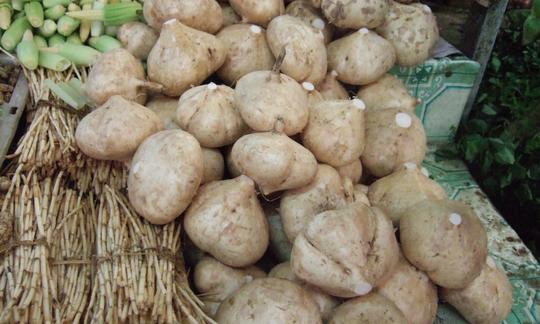


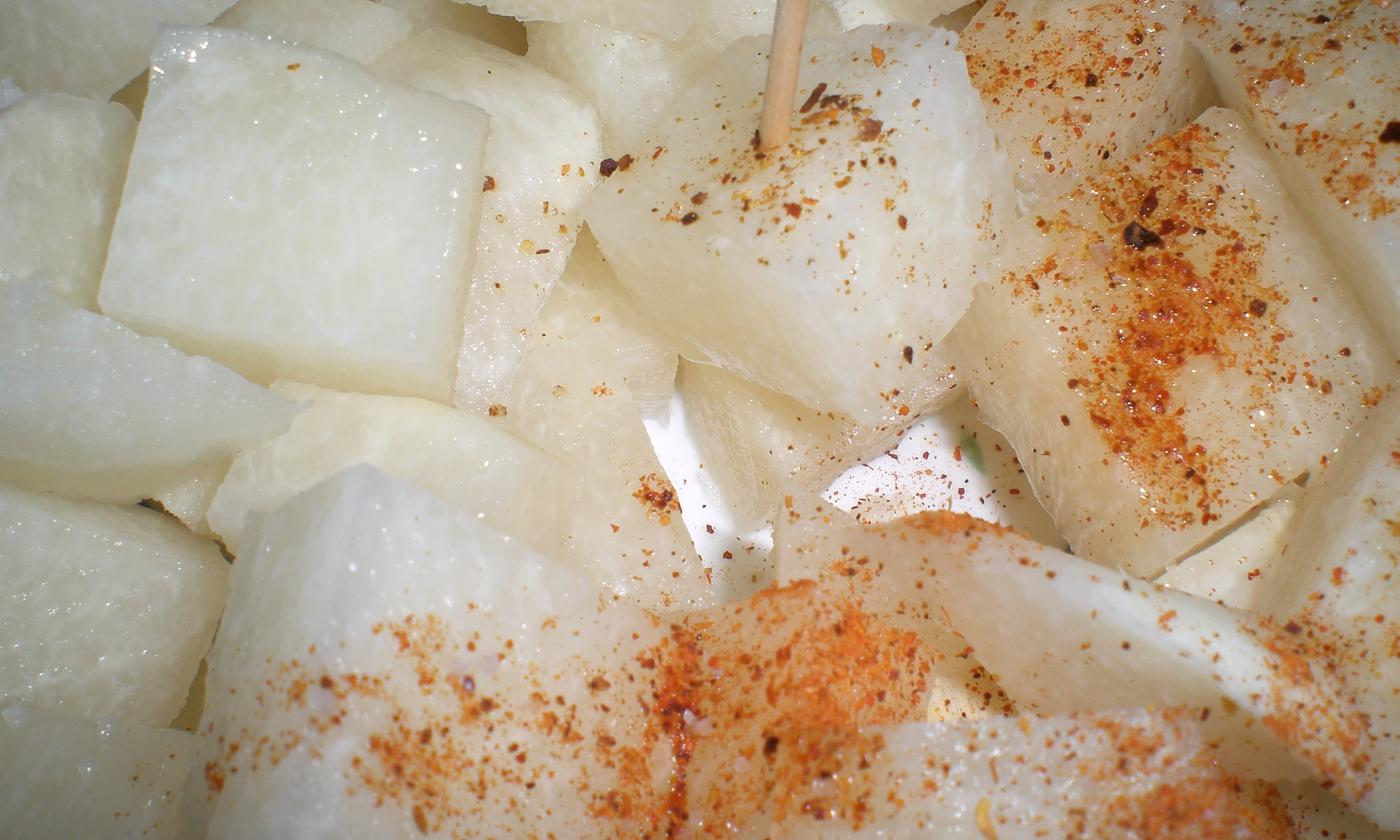
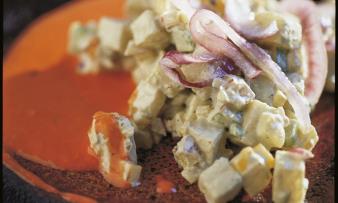
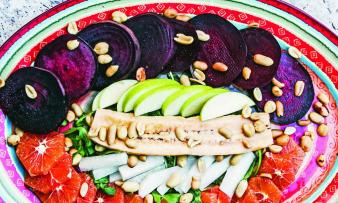
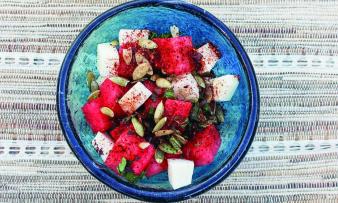





Comments